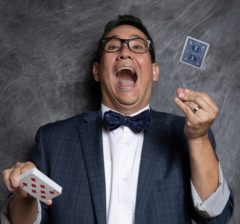My big project right now is co-hosting a podcast for a variety arts festival where we interview the performers and the people behind the scenes that make the festival work. One thing I’ve notice when interviewing performers is some are good interviews and some are more challenging interviews, and I can predict who will be which.
Before someone comes in for an interview, we do research on them. We read their “offical bio” as well as try to do some digging for some other things about them that might be out there. Usually the more someone has out there, the better the interview is. If there’s just one bio that’s repeated around, they’ll be a harder interview. This is simply because they haven’t told their story very often. They haven’t learned the punchlines of the story, or what parts are interesting and what isn’t.
The one question that stumps people that haven’t told their story is, “How did you get to (name of city they live in)?” If you can’t tell me that is a direct way that’s interesting, you don’t know your story. Personally this is a story I tell on stage and it’s got a lot of laughs in it. Your story doesn’t need to have laughs, but you need to learn to tell it and take out all of the BS and make it interesting. This is a common question, and it’s also one that’s easy to shoehorn into any interview if it’s not asked. Take a few minutes, write it out and figure out what’s important and what isn’t.
Work on Your Origin Story…
My big project right now is co-hosting a podcast for a variety arts festival where we interview the performers and the people behind the scenes that make the festival work. One thing I’ve notice when interviewing performers is some are good interviews and some are more challenging interviews, and I can predict who will be … Continue reading “Work on Your Origin Story…”


